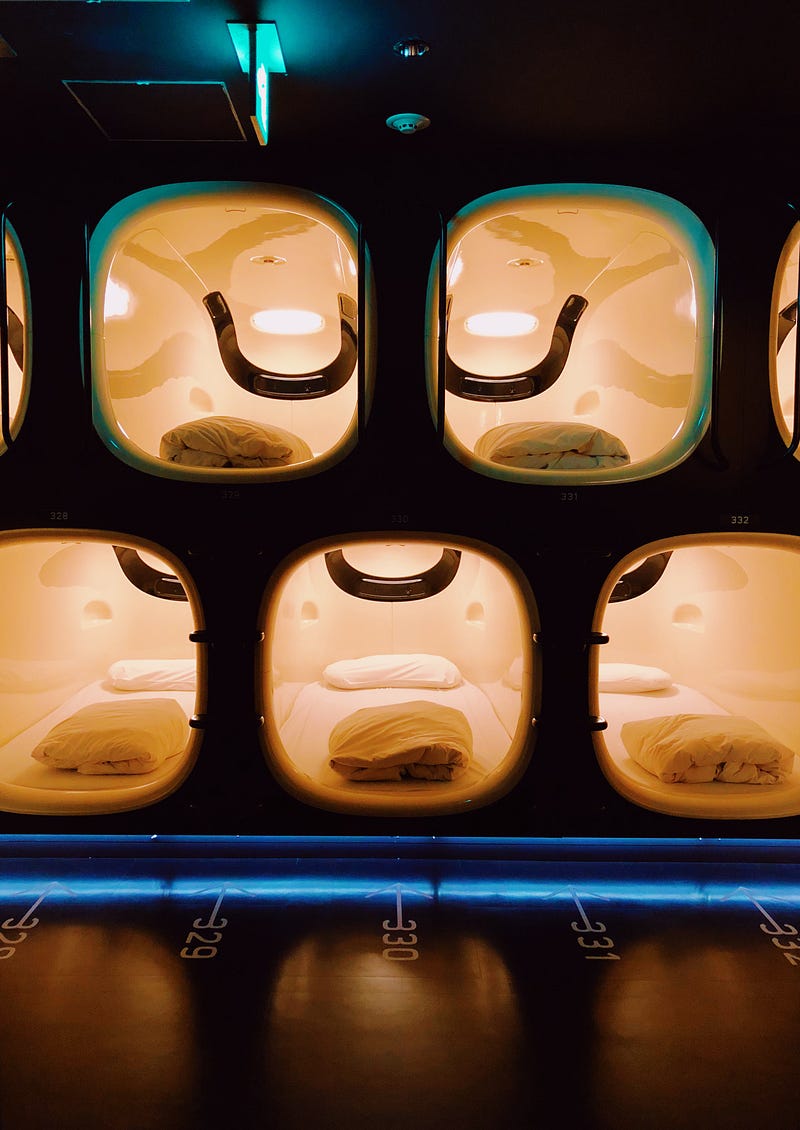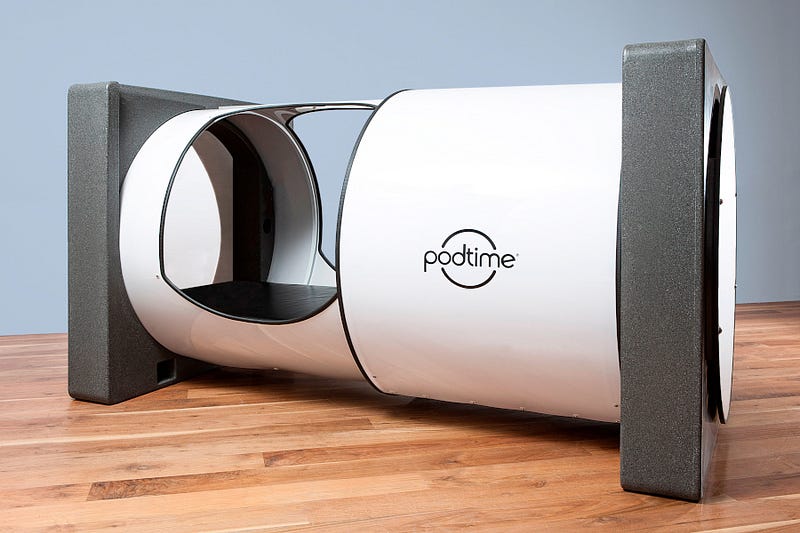The Debate on Nap Pods in Workplaces: A Sleepy Solution?
Written on
Chapter 1: The Need for Rest in the Workplace
Imagine this scenario: You've just returned from a refreshing vacation, but now you're struggling to regain your focus at work. You find yourself glued to your screen, answering calls, and feeling the effects of too much caffeine. After two cups of coffee by noon, you decide to escape to your car, recline the seat, set a timer for 40 minutes, and doze off.
This was my reality for quite some time before the pandemic. I often skipped lunch in favor of sneaking in a quick nap in my vehicle. While not the healthiest approach, it felt necessary when exhaustion hit hard and my energy levels plummeted.
But there’s a peculiar solution that some companies are exploring: nap pods. These compact, electric sleeping chambers provide a cozy space for a brief rest.
According to Wikipedia, “Sleep pods, also known as nap pods, are specialized structures or chairs commonly found in workplaces, hospitals, and universities, designed for short naps.”
Generally, you’ll find these pods in airports and healthcare settings, catering to those who endure long hours without adequate rest—like nurses and pilots. However, they can also serve individuals like me, who just need a little downtime to recharge. The dreaded “slump hours” between 2 PM and 4 PM often leave me longing for a quick nap to counteract my fatigue.
Here are ten companies that have embraced the idea of nap pods for their employees:
- PwC
- Ben & Jerry’s
- Cisco
- Zappos
- Nike
- Potato
- Uber
- White & Case
- Thrive Global
Chapter 2: The Cost of Comfort

PodTime Original is priced at £3,600 (approximately $4,110).
This pod doesn’t look particularly inviting—where are the pillows and blankets? Plus, it seems a bit tricky to navigate in and out of.
On the other hand, the GoSleep Pod appears far more inviting, although I couldn't find its price.

Image from Restworks
The GoSleep Pod seems to be more geared toward corporate use, while PodTime is available for personal purchase.
Pros of Nap Pods
One major advantage of nap pods is the employee benefits they provide. They allow early birds to catch up on sleep and enable those working long shifts to recharge during breaks. Personally, I always feel rejuvenated after a nap. The National Sleep Foundation suggests that the ideal nap lasts between 20 to 90 minutes—though I could easily go for 120!
Additionally, nap pods can attract customers. For instance, airports see countless travelers daily who might appreciate a restful break while awaiting their flights.
Cons of Nap Pods
However, the drawbacks of nap pods are significant.
- High Costs: The initial investment for these pods is considerable.
- Space Constraints: Many businesses are trying to optimize space, making it challenging to find room for large pods.
- Electricity Usage: These pods require power, and if they malfunction while someone is inside, it could lead to serious issues, both physically and mentally.
- Utilization Uncertainty: There’s no guarantee that employees will make use of the pods after they are purchased.
- Limited Benefit: They mainly serve those with unconventional work hours, like night shifts. If you work a standard 9-to-5, a nap might not be necessary unless you are extremely tired.
- Potential for Misuse: I know I would be tempted to take longer naps than allowed!
Conclusion
If I were to manage a traditional office with 9-to-5 employees, investing in nap pods wouldn’t be on my agenda. The cons significantly outweigh the pros, and there are many other employee perks that could be prioritized instead. Conversely, for businesses like call centers or hospitals where staff may have unpredictable hours, nap pods could prove invaluable.
It appears that only major corporations like Google and PwC, known for their flexible work cultures, have adopted nap pods.